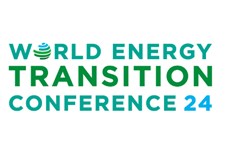LNG exports begin in Argentina
Published by Callum O'Reilly,
Senior Editor
Hydrocarbon Engineering,
Argentina’s domestic natural gas production has been rising steadily in the past three years, largely because of increasing production from the Neuquén Basin’s Vaca Muerta shale and tight gas play, reports the US Energy Information Administration (EIA).
Production from Vaca Muerta surpassed 1 billion ft3/d in December 2018. As production has grown, Argentina has resumed exporting natural gas by pipeline to neighbouring Chile and Brazil and has started exporting LNG. Argentina’s first LNG export cargo was shipped on 6 June from the offshore Tango floating liquefaction unit (FLNG).
The growth in Argentina’s shale and tight gas production has partially offset declines in its natural gas production from mature fields. Production from Vaca Muerta accounts for about 23% of Argentina’s total gross natural gas production. The Vaca Muerta shale formation has technically recoverable resources of 308 trillion ft3 of natural gas and 16 billion bbl of oil and condensate within 8.6 million acres, and it is geologically comparable to the Eagle Ford shale play in southern Texas. Only 4% of Vaca Muerta’s acreage has entered the development phase so far.
Argentina’s domestic natural gas production exceeds consumption during warmer months (October through April), but production is insufficient to meet demand during colder months (May through September), which requires Argentina to import natural gas by both pipeline and as LNG. Because Argentina does not have geologically suitable formations to serve as large-scale natural gas storage facilities, natural gas producers have to shut in surplus production to accommodate seasonal consumption patterns. Argentina is conducting feasibility studies to identify potential natural gas storage sites.
From 1990 through 2007, Argentina was a net exporter of natural gas. Since then, Argentina has been importing more natural gas both by pipeline (mainly from Bolivia) and as LNG. Argentina imports LNG using a floating storage and regasification vessel (FSRU) moored at the Escobar port near Buenos Aires.
Since becoming a net natural gas importer in 2008, Argentina has imported natural gas by both pipeline and as LNG throughout the year. In the last two years, with the growth in domestic production, Argentina has been importing LNG only during cooler months (March through October). Argentina will likely continue importing LNG during cooler months until additional pipeline infrastructure is built to deliver growing shale production to major demand centres.
Argentina’s seasonal demand patterns allow it to export LNG during months when major LNG consuming countries in Asia are importing more LNG.
Natural gas from Vaca Muerta is transported by an existing pipeline network to the port of Bahía Blanca, where it is liquefied at Tango FLNG. These pipelines were previously used to transport imported LNG from an FSRU moored offshore at Bahía Blanca.
Tango FLNG has an LNG production capacity of 500 000 t and is expected to produce up to eight LNG-export cargoes per year. Future growth in LNG exports will require additional investments in onshore liquefaction facilities and pipeline infrastructure or the use of additional floating LNG-production vessels.
Read the article online at: https://www.hydrocarbonengineering.com/gas-processing/12072019/lng-exports-begin-in-argentina/
You might also like
Viridi Energy signs 20-year agreement with Énergir
Viridi Energy, a renewable natural gas (RNG) platform, has signed a 20-year offtake agreement with Énergir, L.P.


